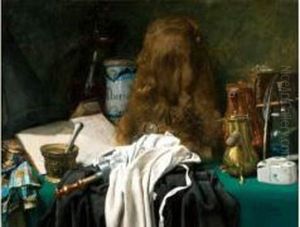Louise Palliere Paintings
Louise Palliere, born in 1774, was a French painter related to a family of artists. She was the daughter of the painter Jean-Baptiste Palliere and was known for her achievements in portrait painting during the late 18th and early 19th centuries. Her work was primarily influenced by the neoclassical style that was prevalent during her time.
Though not as widely recognized as some of her contemporaries, Palliere's contributions to French art were nonetheless noteworthy. She was trained by her father and perhaps other members of her artistic family, which allowed her to develop a keen sense for detailed portraiture. During her career, she exhibited her work at the Paris Salon, the official art exhibition of the Académie des Beaux-Arts in Paris. The Salon was the most significant annual or biennial art event in the Western world at the time.
Louise Palliere's life spanned a tumultuous period in French history, which included the French Revolution, the Napoleonic Wars, and the Restoration of the French monarchy. These events influenced the art of the period and the subjects that artists chose or were commissioned to paint. Despite the challenges of being a female artist in a male-dominated field, Palliere managed to carve out a space for herself and her work in this competitive environment.
Palliere's death in 1836 marked the end of a career that had successfully navigated the complex social and political landscapes of her time. Her paintings remain as a testament to her skill and dedication to the arts. Unfortunately, due to the passage of time and historical focus on more prominent artists, detailed records of her life and the full scope of her work may not be as thorough as for some of her peers. As with many women artists throughout history, her contributions have often been overshadowed by her male counterparts, leading to a need for greater recognition and scholarship on her artistry.
